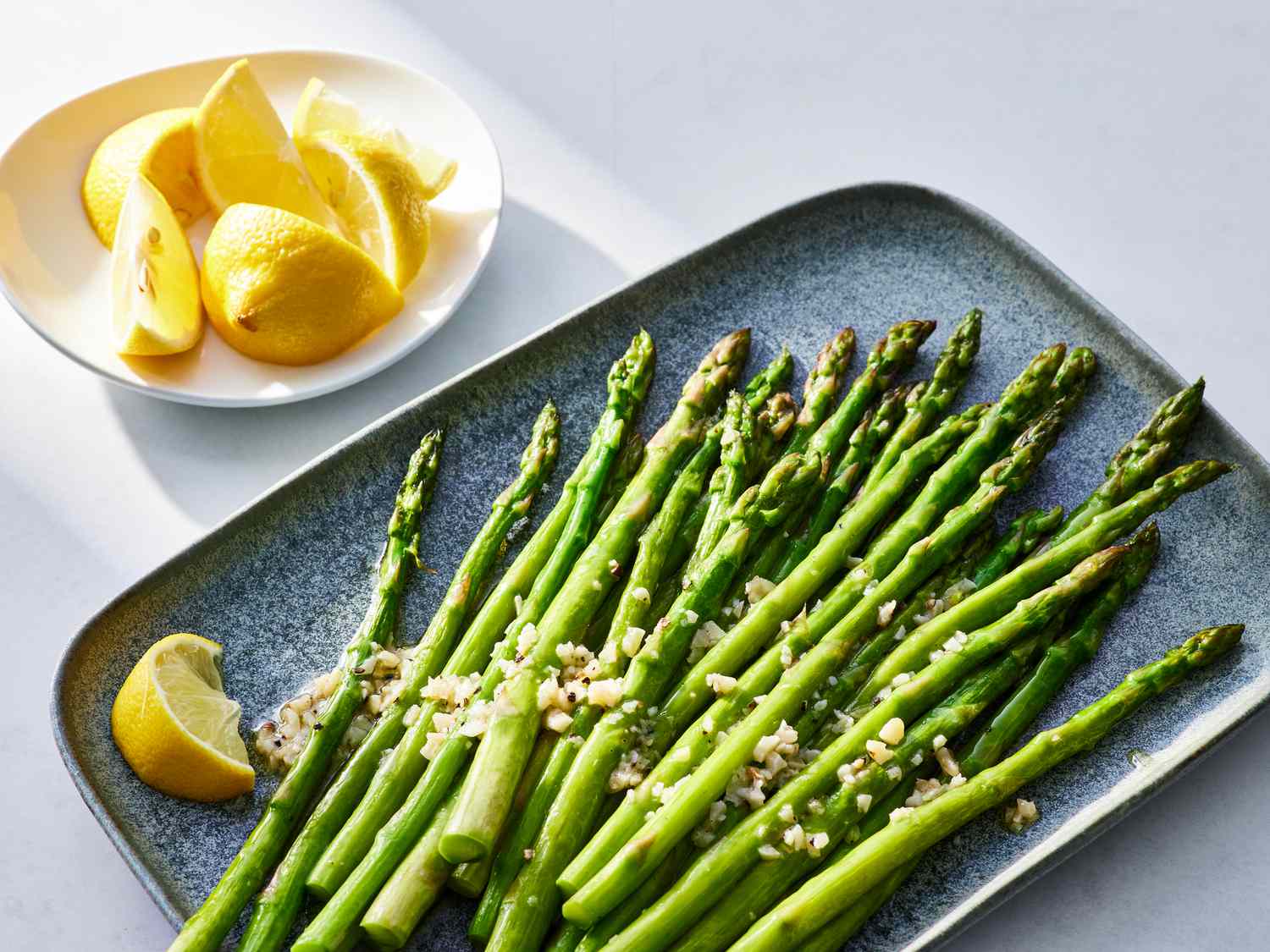Pan Fried Asparagus: Tips, Nutritional Benefits, and Delicious Pairings
Asparagus is a spring vegetable known for its tender, spear-like stalks. You’ll find it in green, white, and purple varieties. Green asparagus is the most common in North America. Its mild, earthy flavor makes it versatile for many dishes. When selecting asparagus, look for firm spears with closed tips. Thicker stalks offer a meatier texture, while thinner ones cook faster. It’s typically available from February to June, with peak freshness in April.
Health Benefits of Asparagus
Asparagus provides several essential nutrients. It’s rich in vitamins A, C, and K, which support immune function, skin health, and blood clotting. You’ll also get a good dose of folate, important for cell growth and DNA formation. Asparagus contains antioxidants like glutathione that help fight oxidative stress. It’s low in calories and high in fiber, aiding digestion and promoting weight management. By including asparagus in your diet, you support overall health while enjoying its unique flavor and texture.
How to Select the Best Asparagus for Pan Frying
Choosing the Right Thickness
Select asparagus stalks based on thickness. Thicker stalks deliver more tender interiors after cooking, while thin stalks have a quicker cook time and retain a crisp texture. For pan frying, opt for medium to thick stalks to avoid overcooking. Balance flavor and texture by choosing stalks around 1/2 inch thick.
Color and Texture Considerations
Prioritize vibrant green asparagus with tightly closed tips. Fresh stalks feel firm and snap easily when bent. Avoid asparagus with wilted ends or slimy tips. Fresh asparagus ensures the best flavor and texture when pan fried.
Essential Ingredients for Pan Fried Asparagus
Oils and Fats
Oils provide the foundational flavor and aid in achieving the desired texture. Olive oil is often preferred because it offers a balanced, smooth flavor without overpowering the asparagus. Use extra virgin olive oil for its robust taste. Other options include avocado oil and grapeseed oil, which both tolerate high heat well. Butter can be added to enhance flavor, offering a rich, nutty essence to the cooked asparagus.
Seasonings and Herbs
Seasonings elevate the dish by adding layers of flavor. Salt and pepper are essential for enhancing the natural taste of asparagus. Kosher salt dissolves evenly, while freshly ground black pepper adds a nuanced spiciness. Garlic adds an aromatic zing; minced fresh garlic or garlic powder works well. For herbs, consider using thyme, rosemary, or parsley. Thyme contributes a subtle earthiness, rosemary offers a pine-like aroma, and parsley adds a hint of freshness. Opt for fresh herbs for the most vibrant flavors. Lastly, a squeeze of lemon juice can brighten the final dish, balancing the richness of the oils and butter.
Step-by-Step Guide to Making Pan Fried Asparagus
Preparing the Asparagus
Start by rinsing the asparagus under cold water, scrubbing away any dirt or debris. Trim the woody ends, usually about 1-2 inches, to keep only the tender parts. For uniform cooking, cut spears into pieces of equal length, around 2-3 inches. Dry the asparagus thoroughly using paper towels or a clean kitchen cloth.
Cooking Techniques
Heat a large skillet over medium-high heat. Add your chosen oil—olive oil, avocado oil, or grapeseed oil—ensuring the pan is lightly coated. Once the oil starts shimmering, add the asparagus in a single layer. Cook for 3-4 minutes without stirring, allowing the spears to develop a crisp exterior.
After the initial cooking time, stir the asparagus occasionally to ensure even cooking. Season with salt, pepper, and garlic to taste. Add herbs like thyme or rosemary for extra flavor. Cook an additional 3-4 minutes, or until the asparagus is tender but still crisp. Finish with a splash of lemon juice and a sprinkle of parsley before serving.
- Use fresh, firm asparagus for best flavor.
- Ensure even oil application by lightly coating the pan.
- Add lemon juice last to preserve its bright flavor.
Serving Suggestions for Pan Fried Asparagus
Pairings with Proteins
Pan-fried asparagus complements various proteins, adding a nutritious and flavorful side to your meals. Serve it with grilled chicken for a balanced combination of tenderness and crunch. Pair it with salmon, leveraging the omega-3s in the fish and the vitamins from the asparagus. Enhance a steak dinner by contrasting the rich meat with the fresh, lightly charred asparagus. For plant-based options, combine it with tofu, which absorbs the dish’s flavors well. Consider adding pan-fried asparagus to omelets or frittatas for a hearty breakfast.
Incorporating Into Different Cuisines
Pan-fried asparagus serves as a versatile ingredient in many cuisines. For Mediterranean dishes, toss with feta cheese, olives, and a drizzle of balsamic glaze. Incorporate it into an Italian pasta primavera, mixing with cherry tomatoes, garlic, olive oil, and parmesan. In Asian cuisine, add it to stir-fries with soy sauce, ginger, and sesame oil for a nutritious twist. For a Mexican flair, mix pan-fried asparagus into tacos with black beans, corn, and avocado. These variations ensure pan-fried asparagus fits seamlessly into diverse meal plans.
Conclusion
Pan-fried asparagus isn’t just a delicious side dish; it’s a versatile addition to any meal. With its rich nutritional profile and straightforward preparation, it’s easy to elevate your dining experience. Whether you’re pairing it with your favorite protein or incorporating it into various cuisines, pan-fried asparagus offers endless culinary possibilities. So next time you’re planning a meal, consider adding this vibrant and flavorful vegetable to your menu. Your taste buds and your health will thank you.






